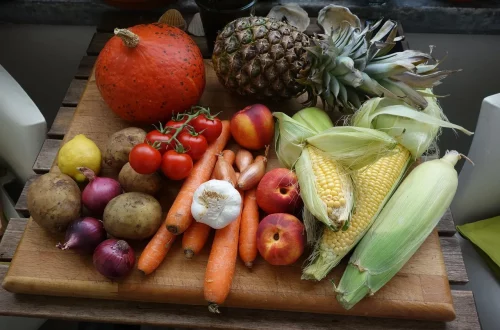
Lena the Plug Explores the Dynamics of Interracial Relationships
Interracial relationships have become increasingly common in today’s multicultural society, challenging traditional norms and perceptions about love and partnership. These relationships often symbolize a bridge between different cultures, ethnicities, and backgrounds, allowing individuals to explore the richness of diversity in an intimate setting. As society evolves, the dynamics of interracial partnerships are also changing, creating new conversations around identity, acceptance, and the blending of different cultural heritages.
The journey of individuals navigating these relationships can be both rewarding and complex, as they confront not only their own biases but also the expectations of family, friends, and society at large. The beauty of interracial relationships lies in their ability to foster understanding and create a dialogue about race and culture, making them a significant focal point in discussions about love and connection in contemporary life. This exploration of interracial dynamics opens up a world of experiences that can challenge preconceived notions and promote greater empathy and tolerance among diverse communities.
In this article, we will delve into various aspects of interracial relationships, from the societal perceptions that shape them to the personal experiences of those involved. Through this exploration, we aim to highlight the importance of love that transcends racial boundaries and the lessons that can be learned from these unique partnerships.
Understanding Societal Perceptions of Interracial Relationships
The societal perceptions surrounding interracial relationships have evolved significantly over the years. Historically, such unions were often met with skepticism, disapproval, or outright hostility. Many communities upheld strict racial boundaries that dictated who could marry whom, leading to a cultural stigma that still lingers in some areas today.
However, as society progresses and becomes more inclusive, these perceptions are beginning to shift. Today, many people view interracial relationships as a natural extension of our increasingly globalized world. The media plays a critical role in this transformation, showcasing diverse couples in films, television shows, and advertising campaigns. This representation helps normalize interracial relationships and fosters a greater acceptance among audiences.
Despite this progress, challenges remain. Couples in interracial relationships may still face prejudice and stereotypes, which can manifest in various ways, from subtle microaggressions to overt discrimination. Such experiences can be deeply impactful, affecting not only the individuals involved but also their families and communities. Navigating these societal pressures often requires resilience and a strong sense of identity.
Moreover, the dynamics within an interracial relationship can be influenced by the cultural backgrounds of each partner. Each individual brings their unique perspectives, traditions, and values into the relationship. This blending can lead to enriching experiences but may also require compromise and dialogue to address potential conflicts. Effective communication is essential, as partners must be willing to discuss their differences openly and honestly.
In conclusion, the societal perceptions of interracial relationships are complex and multifaceted. While there has been significant progress in acceptance, challenges persist. It is crucial for couples to navigate these dynamics with empathy and understanding, fostering a relationship rooted in love that can withstand external pressures.
Personal Experiences: Challenges and Triumphs
Personal experiences in interracial relationships often encompass a wide range of emotions, from joy and fulfillment to frustration and heartache. Each couple’s journey is unique, shaped by their individual backgrounds and the societal context in which they exist.
One of the most common challenges faced by interracial couples is the differing attitudes towards race and culture within their families. Parents and relatives may struggle with accepting their child’s partner due to ingrained cultural beliefs or stereotypes. This can create tension, leading to difficult conversations or even estrangement. Many couples find themselves in a position where they must advocate for their relationship while also trying to maintain familial bonds.
On the other hand, the triumphs of interracial relationships can be profoundly rewarding. Couples often report that their love has deepened as they navigate these challenges together. They learn to appreciate each other’s cultural backgrounds and may even incorporate diverse traditions into their lives. This blending of cultures can enhance their relationship, fostering a richer family life for future generations.
Moreover, many interracial couples find a sense of community among others in similar situations. They often share their experiences, providing support and understanding to one another. This network can be instrumental in overcoming the challenges they may face, as they can draw strength from shared understanding and solidarity.
It is also essential to recognize that personal growth often stems from navigating interracial relationships. Partners are frequently pushed to confront their biases, question societal norms, and engage in difficult conversations about race. This process can lead to greater empathy and understanding, not just within the relationship but also in broader societal contexts.
Ultimately, the challenges and triumphs experienced by interracial couples can serve as powerful narratives that highlight the importance of love, resilience, and commitment. These stories contribute to a greater understanding of the complexities of race and culture in modern relationships, paving the way for more inclusive discussions about love and partnership.
The Role of Communication in Interracial Relationships
Effective communication is the cornerstone of any successful relationship, but it takes on an even greater significance in interracial partnerships. The need for open dialogue becomes paramount as couples navigate the complexities of their diverse backgrounds and experiences.
One of the key aspects of communication in interracial relationships is the ability to discuss sensitive topics related to race and culture. Partners must feel comfortable expressing their feelings, concerns, and experiences without fear of judgment. This requires creating a safe space where both individuals can share their perspectives openly.
Active listening is equally important. Each partner must be willing to hear and understand the other’s viewpoint, especially regarding experiences of discrimination or cultural differences. This empathy can foster a deeper connection and help partners navigate potential conflicts that may arise from misunderstandings.
Additionally, couples should be proactive in addressing potential issues before they escalate. For instance, discussing how to handle questions or comments from outsiders can be beneficial. By agreeing on how to respond together, partners can present a united front and alleviate some of the stress that can come from external scrutiny.
Cultural differences can also manifest in communication styles. For example, some cultures may prioritize direct communication, while others may lean towards a more indirect approach. Understanding these differences can help partners avoid misinterpretations and foster a more harmonious dialogue.
In summary, communication plays a critical role in the success of interracial relationships. By fostering open, honest, and empathetic dialogue, partners can navigate the challenges that arise from their diverse backgrounds. This commitment to understanding and connection can ultimately strengthen their bond, allowing their love to flourish amidst societal complexities.
In conclusion, interracial relationships offer a unique lens through which to explore love, culture, and identity. While they may present challenges, the rewards of understanding and acceptance can be profound. As society continues to evolve, these relationships will undoubtedly play a significant role in shaping conversations around race, identity, and love, ultimately fostering a more inclusive world for future generations.
**Note:** This article does not constitute medical advice. For any health-related issues, please consult a qualified healthcare professional.




